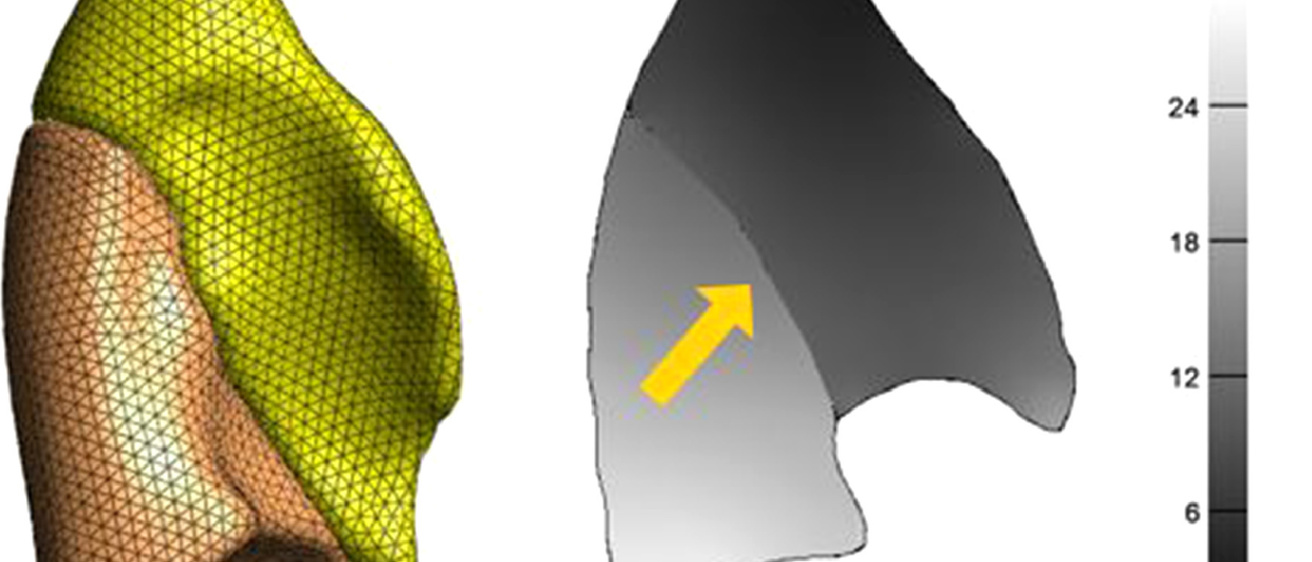Adam Galloy (from Prof. Raghavan's lab) just published an article on lung lobar sliding analysis using contact mechanics in Applications in Engineering Science: Contact Mechanics Model of Lung Lobar Sliding
Abstract: Lobar sliding is an often-overlooked aspect of lung mechanics that presents a potential source of variance in the lung mechanics and physiology of different subjects. The goal of this study was to develop a finite element model suitable for studying lobar sliding in the lungs to gain insights about the extent to which too little or too much lobar sliding impacts breathing. We focused on left lung as it has a single lobar fissure. The model geometry was derived from whole lung and lobar segmentations of a CT image at end inhalation and was divided into three components: a thoracic cavity outer shell, a volumetric upper lobe, and a volumetric lower lobe. Deformation of the lung tissue was driven by non-zero displacement boundary conditions applied to the thoracic cavity shell to simulate exhalation and contact constraints between each of the three geometric components. To verify the numerical methods used in this contact mechanics model, we replicated a contact mechanics benchmark problem from the literature. Further, numerical simulations were performed to determine the optimal contact mechanics parameters for the lung model. The resulting model displacement field exhibited discontinuities at the lobar fissure indicative of lobar sliding and had an average error of 2.3 mm when compared to displacements between anatomical landmarks on the CT images, which is consistent with lung simulation models in literature. The developed finite element contact mechanics model of the lung is novel in the lung mechanics field and may be interrogated to gain insights about the role of lobar sliding in breathing mechanics.
